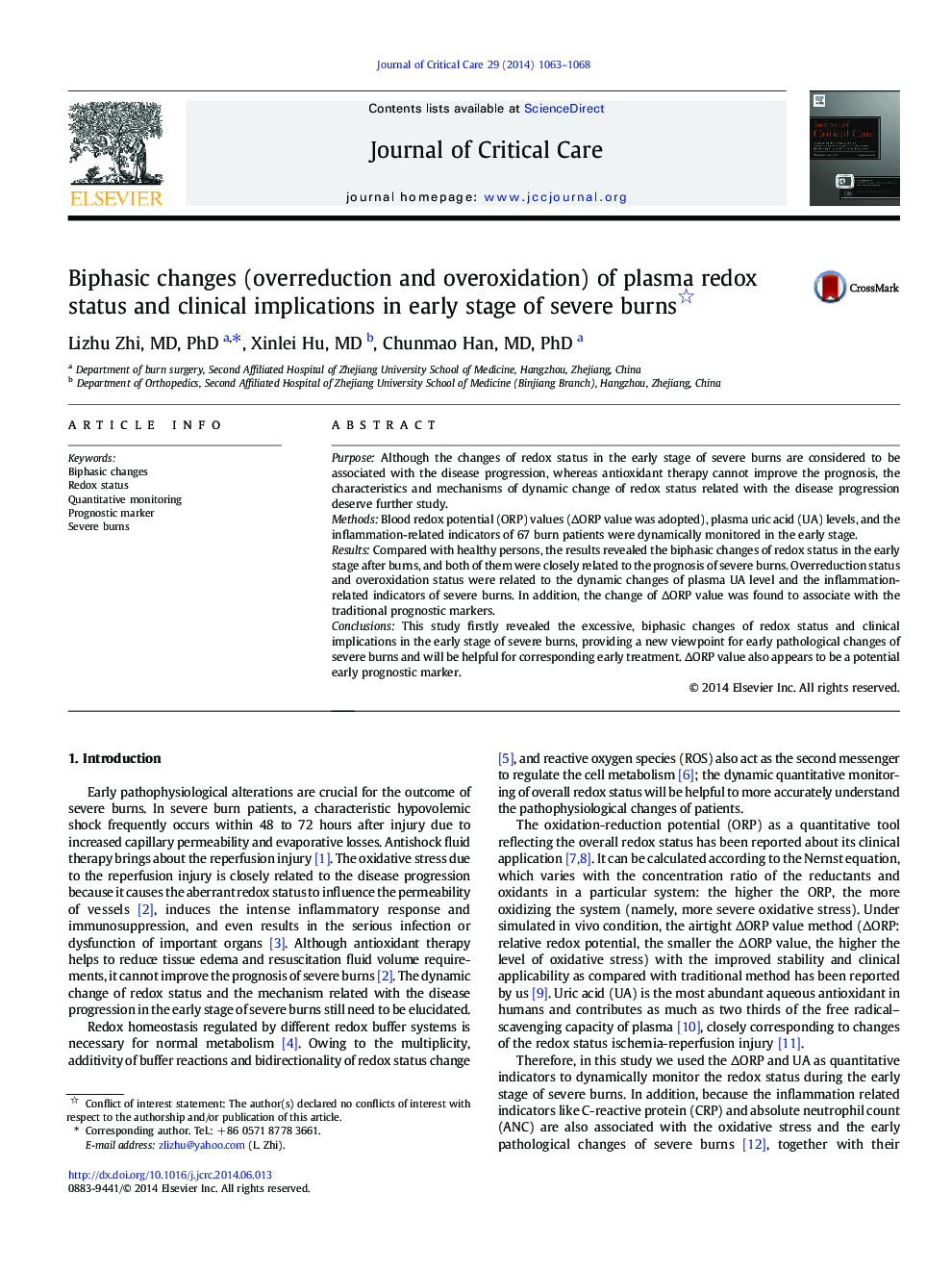| Article ID | Journal | Published Year | Pages | File Type |
|---|---|---|---|---|
| 5886212 | Journal of Critical Care | 2014 | 6 Pages |
PurposeAlthough the changes of redox status in the early stage of severe burns are considered to be associated with the disease progression, whereas antioxidant therapy cannot improve the prognosis, the characteristics and mechanisms of dynamic change of redox status related with the disease progression deserve further study.MethodsBlood redox potential (ORP) values (ÎORP value was adopted), plasma uric acid (UA) levels, and the inflammation-related indicators of 67 burn patients were dynamically monitored in the early stage.ResultsCompared with healthy persons, the results revealed the biphasic changes of redox status in the early stage after burns, and both of them were closely related to the prognosis of severe burns. Overreduction status and overoxidation status were related to the dynamic changes of plasma UA level and the inflammation-related indicators of severe burns. In addition, the change of ÎORP value was found to associate with the traditional prognostic markers.ConclusionsThis study firstly revealed the excessive, biphasic changes of redox status and clinical implications in the early stage of severe burns, providing a new viewpoint for early pathological changes of severe burns and will be helpful for corresponding early treatment. ÎORP value also appears to be a potential early prognostic marker.
